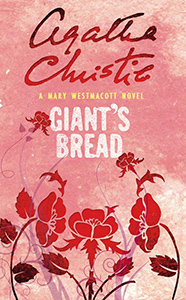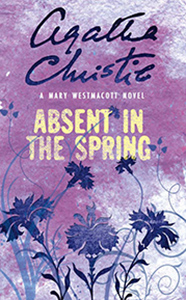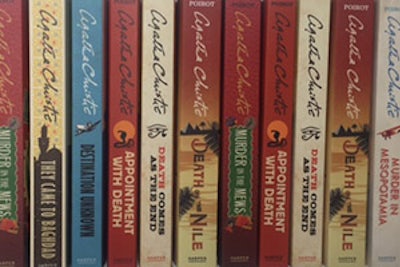
The Mary Westmacotts
Written under the pseudonym Mary Westmacott, these novels gave my grandmother the chance to better explore the human psychology she was so intrigued by, freed from the expectations of her mystery fans. My mother, Rosalind, called them “bitter-sweet stories about love” and this piece was written by her for the Centenary celebrations in 1990. Mathew Prichard
“As early as 1930, my mother wrote her first novel using the name Mary Westmacott. These novels, six in all, were a complete departure from the usual sphere of Agatha Christie Queen of Crime.
The name Mary Westmacott was chosen after some thought. Mary was Agatha’s second name and Westmacott the name of some distant relatives. She succeeded in keeping her identity as Mary Westmacott unknown for nearly twenty years and the books, much to her pleasure, were modestly successful.

Giant’s Bread was first published in 1930 and was to be the first of six books under this nom de plume. It is a novel about Vernon Deyre, his childhood, his family, the two women he loved and his obsession with music. My mother had some experience of the musical world having been trained as a singer and a concert pianist in Paris when she was young.
She was interested in modern music, and tried to express the feelings and ambitions of the singer and the composer. There is a lot about childhood and the First World War taken from her own experiences.
Her publishers, Collins, were not very enthusiastic about this change of direction in her work as she was at this time becoming quite well known in the world of detective fiction. They needn’t have worried. In 1930 she also published The Mysterious Mr Quin and, Murder at the Vicarage – Miss Marple’s first book. During the next ten years there followed no less than sixteen full length Poirot stories including such titles as Murder on the Orient Express, The ABC Murders, Death on the Nile, and Appointment with Death.
Her second Mary Westmacott book Unfinished Portrait was published in 1934. It also relied a lot on her own experiences and early life. In 1944 she published Absent in the Spring. She wrote in her autobiography:
“Shortly after that, I wrote the one book that has satisfied me completely. It was a new Mary Westmacott, the book that I had always wanted to write, that had been clear in my mind. It was the picture of a woman with a complete image of herself, of what she was, but about which she was completely mistaken. Through her own actions, her own feelings and thoughts, this would be revealed to the reader. She would be, as it were, continually meeting herself, not recognising herself, but becoming increasingly uneasy. What brought about this revelation would be the fact that for the first time in her life she was alone – completely alone – for four or five days.
“I wrote that book in three days flat…I went straight through…I don’t think I have ever been so tired…I didn’t want to change a word and although I don’t know myself of course what it is really like, it was written as I meant to write it, and that is the proudest joy and author can have.”

I think Absent in the Spring combines many talents from Agatha Christie, the detective story writer. It is very well constructed, compulsive reading. You get a wonderfully clear picture of all the family from the thoughts of one woman alone in the desert – really quite a triumph.
In 1947 she wrote The Rose and the Yew Tree. This was a great favourite of hers and of mine too. It is a haunting and beautiful story. Strangely enough Collins didn’t like it and as they hadn’t been very kind about any of the Mary Westmacotts, she took it to Heinemann who published this and her last two books – A Daughter’s a Daughter (1952) and The Burden (1956).
The Mary Westmacott books have been described as romantic novels but I don’t think that is really a fair assessment. They are not ‘love stories’ in the general sense of the term, and they certainly have no happy endings. They are, I believe, about love in some of its most powerful and destructive forms.
The possessive love of a mother for her child, or a child for its mother in both Giant’s Bread and Unfinished Portrait. The battle between the widowed mother and her grown-up daughter in A Daughter’s a Daughter. A girl’s obsession with her younger sister in The Burden and the closeness of love to hate – the Burden in this story being the weight of one person’s love on someone else.
Mary Westmacott never enjoyed the same critical acclaim as Agatha Christie, but the books achieved some recognition in a minor way and she was pleased when people enjoyed them – she was able to fulfil her wish to write something different.”
Rosalind Hicks
Read more about Family Memories

The Guessing Game
Christie's grandson recalls a memory of Agatha Christie reading the family A Pocket Full of Rye and everyone guessing who the murderer was.

Inspired by Travel
Mathew Prichard describes the inspiration Christie gained from travelling on the Orient Express.

Inspired by Archaeology
Mathew Prichard looks at Agatha Christie's novels that were inspired by her trips on archaeological digs.


 UK
UK 
